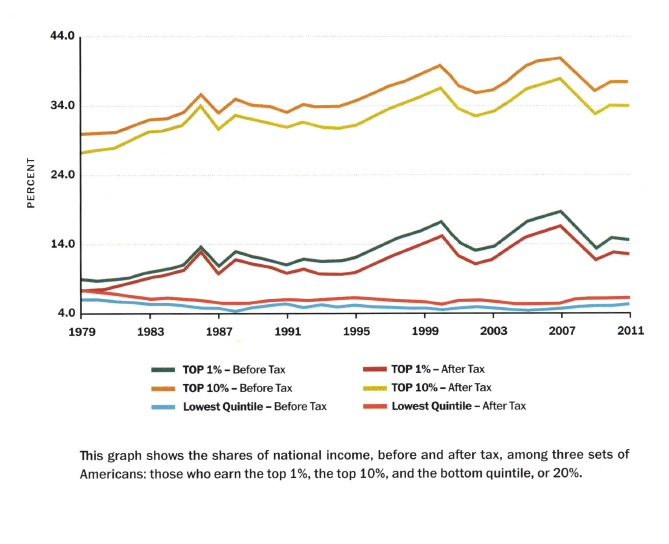Many in the redistribution camp attribute this pattern to a lack of progressivity in the U.S. income-tax system; a higher rate of taxation on the wealthy should solve it, they think. But the United States is already a highly taxed country with a highly progressive tax rate. Indeed, income taxes in the United States are at least as progressive as those in many other developed countries. The highest marginal rate in the States was 35 percent, from 2003 to 2012; today it is 39.6 percent for top earners—not far out of line with those of America’s chief competitors, including Germany, France, the United Kingdom, and Japan, where the highest marginal rates range between 40 and 46 percent.
[Note that Piereson here makes an error in comparing the total tax rates of these foreign countries with the U.S. federal rate; adding in state and city income tax here in the U.S. makes the true top rate closer to 50 percent in some high-income parts of the U.S., e.g., New York City and California]
Payroll taxes [40 percent of federal revenue] fall more heavily upon working- and middle-class wage and salary income earners than upon the wealthy, whose incomes come disproportionately from capital gains or whose salaries far exceed the maximum earnings subject to those taxes.
Turning to the spending side of fiscal policy, we encounter a murkier situation because of the sheer number and complexity of federal spending programs. The House of Representatives Budget Committee estimated in 2012 that the federal government spent nearly $800 billion on 92 separate anti-poverty programs that provided cash assistance, medical care, housing assistance, food stamps, and tax credits to the poor and near-poor. The number of people drawing benefits from anti-poverty programs has more than doubled since the 1980s, from 42 million in 1983 to 108 million in 2011. The redistributive effects of these programs are limited, however, because most funds are spent on services to assist the poor and only a small fraction of these expenditures are distributed in the form of cash or income.
As it turns out, most of the money goes not to poor or near-poor households but to providers of services. The late Daniel Patrick Moynihan once tartly described this as “feeding the horses to feed the sparrows.” This country pays exorbitant fees to middle-class and upper-middle-class providers to deliver services to the poor.
The American welfare state was built to deliver services rather than incomes in part because the American people have long viewed poverty as a condition to be overcome rather than one to be subsidized with cash. Many also believe that the poor would squander or misspend cash payments and so are better off receiving services and in-kind benefits such as food stamps, health care, and tuition assistance. With regard to aid to the poor, Americans have built a social-service state, not a redistribution state.
As one NBER study bluntly stated: “Social Security does not redistribute from people who are rich over their lifetime to those who are poor. In fact, it may even be slightly regressive.” This is partly because wealthier recipients tend to live longer than others and partly because they are more likely to have non-working spouses also eligible to collect benefits.
… the people and groups lobbying for federal programs are generally those who receive the salaries and income rather than those who get the services. They, as Senator Moynihan observed decades ago, are the direct beneficiaries of most of these programs, and they have the strongest interest in keeping them in place. The nation’s capital is home to countless trade associations, companies seeking government contracts, hospital and medical associations lobbying for Medicare and Medicaid expenditures, agricultural groups, college and university lobbyists, and advocacy organizations for the environment, the elderly, and the poor, all of them seeking a share of federal grants and contracts or some form of subsidy, tax break, or tariff.
What can we as citizens do about this? Perhaps save ourselves a lot of time by not listening when a politician promises to do something about the poorest Americans! We can be pretty sure that their ability to spend cash will be almost nonexistent, regardless of the tax rates applied to society’s highest earners.
